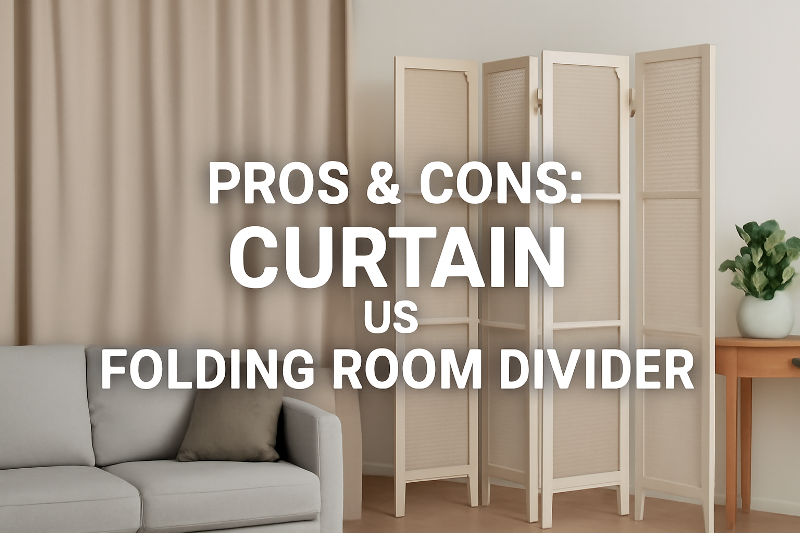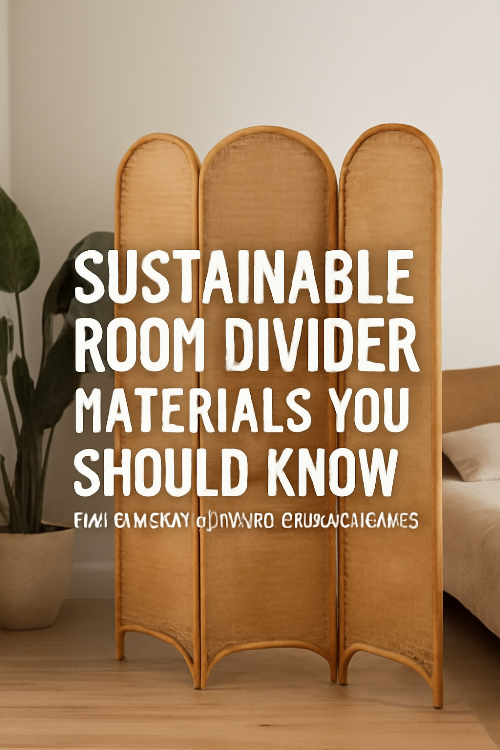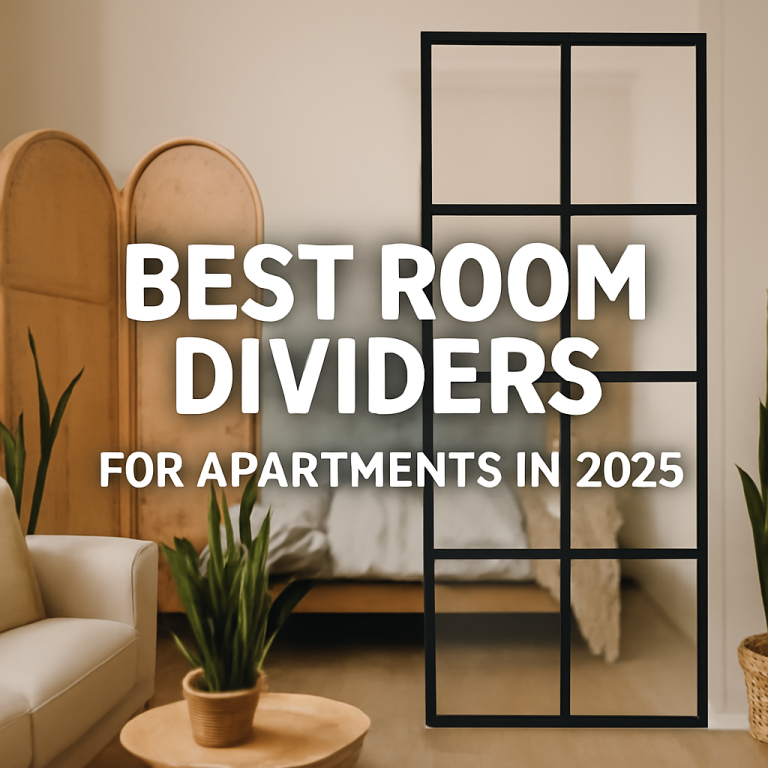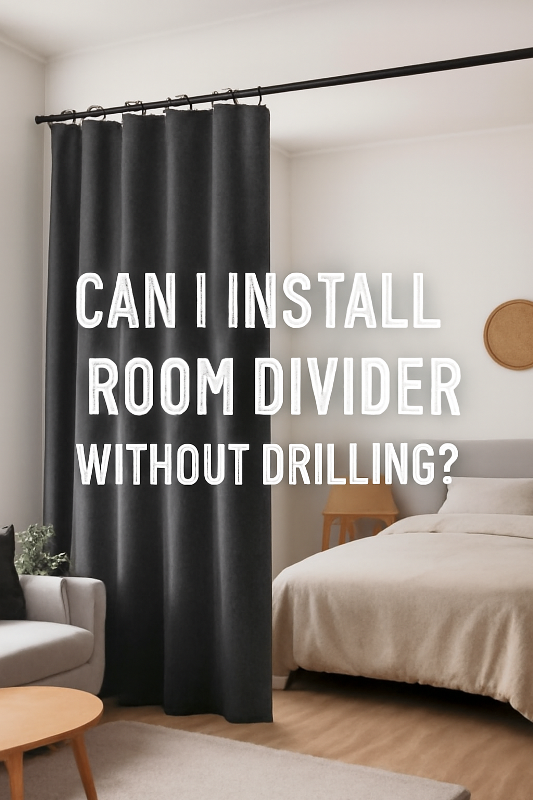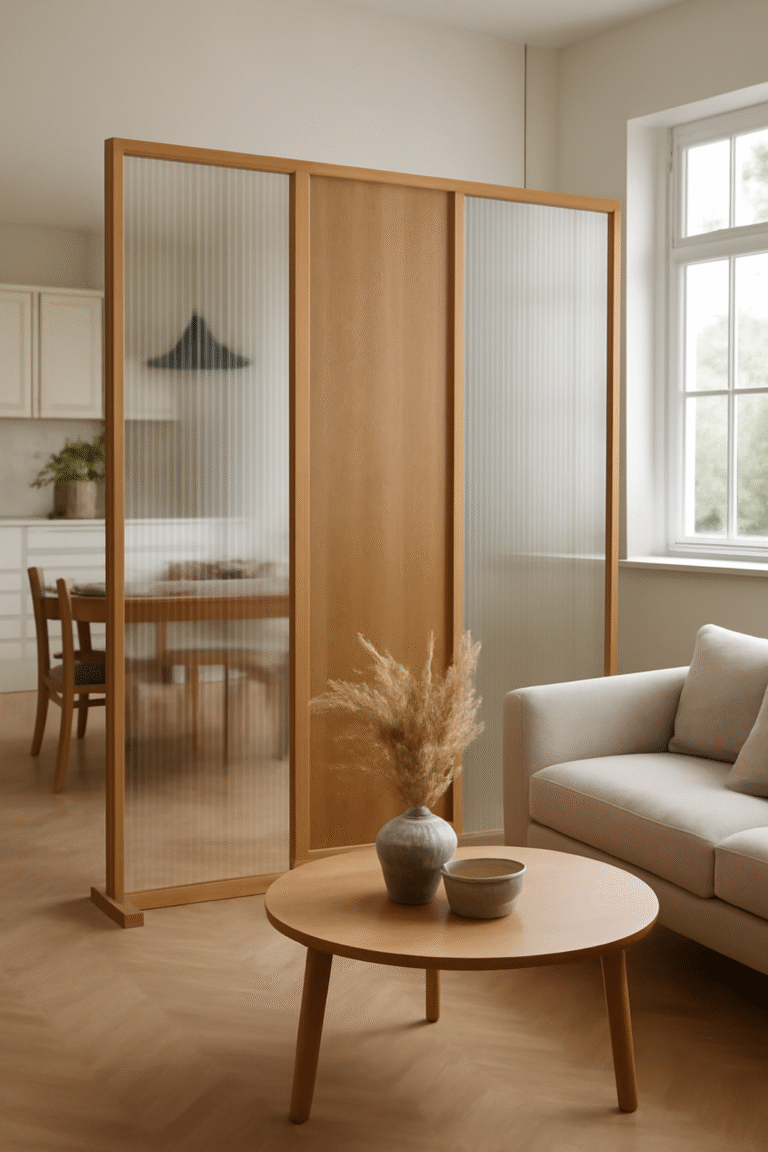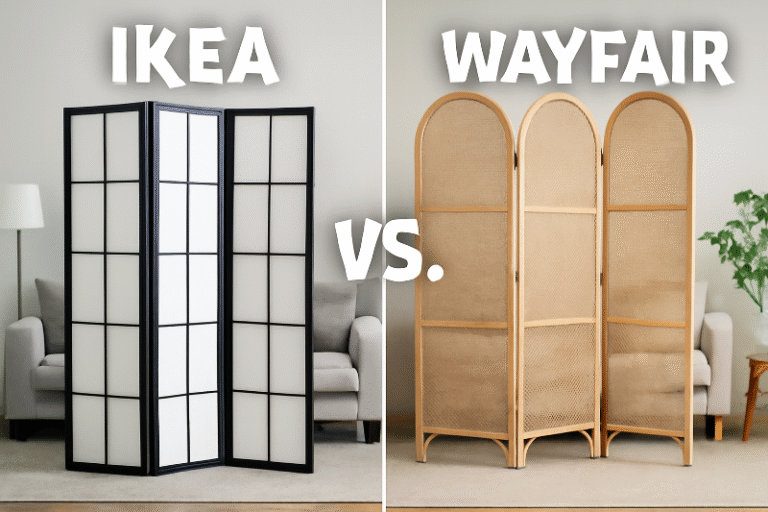While curtains are perfect for those seeking an affordable, flexible option, folding dividers are better suited for people who prioritize privacy, durability, and style. Assess your space’s layout, your specific needs, and your budget before making the final decision.
Room Divider
Room dividers are an excellent solution for creating separate zones in a space, whether it’s to provide privacy, enhance organization, or simply improve the aesthetics of your room. Among the most popular room divider options are curtains and folding screens. Both offer unique benefits depending on the purpose, space, and budget. This article will break down the pros and cons of each to help you determine which is the best fit for your needs.
Curtain Dividers:
Curtain dividers are a flexible and lightweight option that can be mounted on tension rods, ceiling tracks, or curtain rods. They provide a soft, fabric-based separation between rooms, offering a more fluid, movable solution than other types of dividers. Often, they are used in spaces where privacy or temporary separation is desired.
Pros of Curtain Dividers
- Affordable Curtains are one of the most budget-friendly room divider options available. They are often cheaper than folding screens or solid panel dividers, making them an attractive option for people on a tight budget.
- Easy to Install One of the biggest advantages of curtains as dividers is the ease of installation. Most curtains can be hung using tension rods (no drilling required) or mounted tracks, making them a renter-friendly option. If you’re in a temporary living space or prefer to avoid permanent changes, curtains are a simple and quick solution.
- Lightweight & Flexible Curtains are lightweight, making them easy to adjust, move, or replace. They offer a highly flexible solution, especially when the divider needs to be drawn back when not in use.
- Aesthetic Variety Available in a wide range of fabrics, colors, patterns, and styles, curtains allow for great customization. Whether you want a sheer curtain to let light filter through or a heavier fabric for full privacy, curtains offer options to suit your space and design preferences.
- Minimal Impact on Space Curtains can be drawn completely back to open up the space when needed, offering a more flexible, less obtrusive option than other dividers. This makes them perfect for small apartments or multifunctional rooms that require flexibility.
Cons of Curtain Dividers
- Limited Privacy While curtains provide some level of privacy, they generally don’t offer the same level of separation as solid dividers. Thin or sheer curtains, in particular, may not block out sightlines or noise, making them unsuitable for areas where total privacy is essential.
- Not Soundproof Curtains typically don’t provide significant sound insulation. If you need a divider to help reduce noise (for example, in a shared living situation or home office), curtains won’t be as effective as more solid dividers like folding screens or acoustic panels.
- Maintenance Fabric curtains require regular cleaning, which can be time-consuming. Dust, pet hair, and other debris can accumulate, particularly in high-traffic areas, making curtains less ideal for people looking for a low-maintenance option.
- Less Structural Integrity Curtains don’t offer the same rigid structure as folding screens or other solid dividers. If you need something sturdy to separate spaces permanently or require a strong physical barrier, curtains may not provide the necessary support.
Folding Room Dividers: Overview
Folding room dividers, often referred to as folding screens, are made from panels connected with hinges, allowing them to fold up for easy storage. These dividers come in a variety of materials, including wood, metal, fabric, and more, and are commonly used to create distinct, functional zones within a room.
Pros of Folding Dividers
- Privacy and Separation Folding dividers are typically more effective at providing privacy and visual separation compared to curtains. With solid panels or heavier materials, they offer better coverage, ensuring that sightlines are blocked off between spaces.
- Durability Folding room dividers are often made from sturdier materials like wood, metal, or thick fabric, providing a more substantial, long-lasting barrier. They can withstand wear and tear better than curtains, which may fray or lose their appearance over time.
- Stability Unlike curtains that can blow with drafts or get caught in wind, folding dividers remain stable and don’t shift easily. This makes them ideal for spaces where you need a secure partition, such as in a home office or shared living area.
- Aesthetic Variety Folding dividers come in a wide range of designs, from modern minimalist to vintage styles. They can be made from materials such as wood, fabric, and metal, offering both form and function. Depending on your style, you can opt for a sleek metal divider or a traditional wooden folding screen.
- Portable Folding dividers are often portable and easy to move. You can quickly shift them to a different location or fold them up when you need more open space. This feature is particularly valuable for people who want the flexibility to reconfigure their space on demand.
Cons of Folding Dividers
- Price Compared to curtains, folding dividers tend to be more expensive. The cost increases further if you opt for premium materials such as wood, metal, or designer fabric. For those on a tight budget, folding dividers may not be the most affordable choice.
- Size Limitations Folding dividers are typically designed in a fixed size or fold-out configuration. If you need a large divider to span across a broad area, you may need to purchase multiple dividers or invest in custom options. This can limit their ability to effectively divide larger spaces.
- Less Flexibility While folding dividers are portable, they are less flexible than curtains. If you need to frequently open up the space or want the option of a full-width opening, folding screens may not be as easy to move out of the way as curtains. Once set in place, folding dividers are often more permanent.
- Can Block Light Unlike curtains, which can be opened to let natural light through, folding dividers can block off light, especially if they are made from solid materials like wood or metal. This can make your space feel darker and less airy, which may not be ideal for certain areas, such as small or windowless rooms.
Conclusion: Which Divider Is Right for You?
Both curtains and folding dividers have their unique advantages and drawbacks, and the right choice ultimately depends on your specific needs and space. Here’s a quick summary to help you decide:
- Choose Curtain Dividers If:
- You’re on a budget and need a temporary, flexible solution.
- You want something lightweight, easy to install, and aesthetically customizable.
- Privacy and noise reduction are not your top priorities.
- Choose Folding Room Dividers If:
- You need more privacy, stability, and sound insulation.
- You prefer a more permanent, durable solution that provides better separation.
- You have a larger space and need a divider that offers more coverage and structural integrity.
